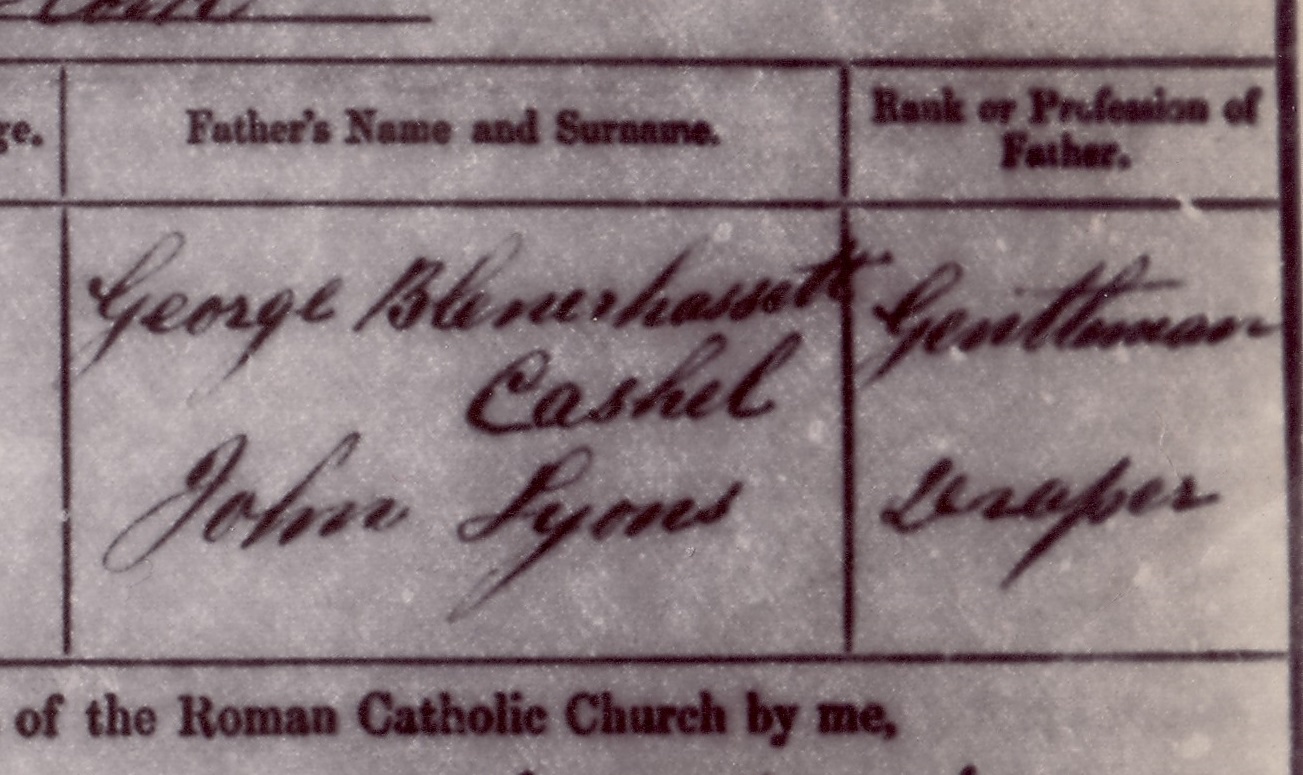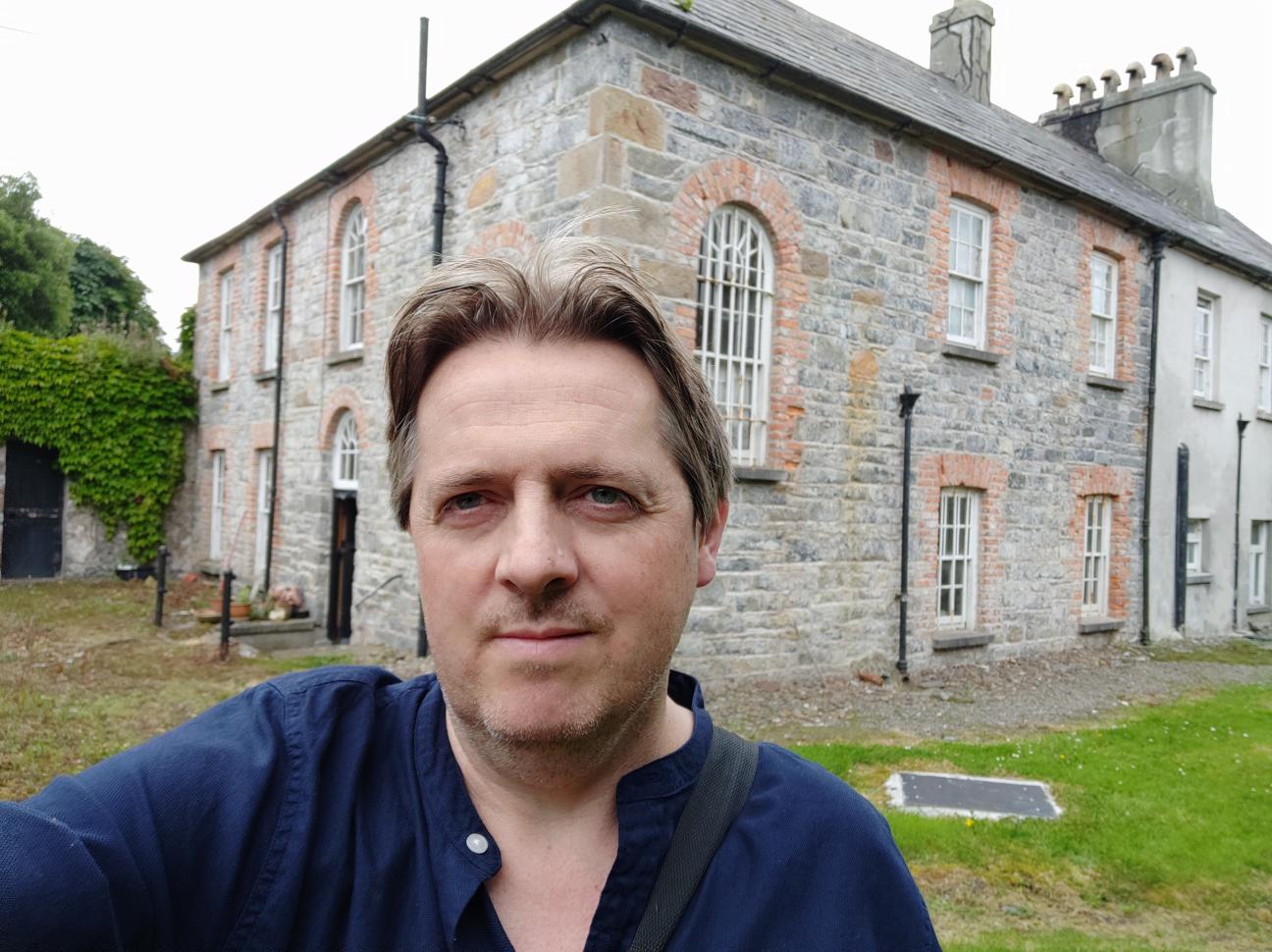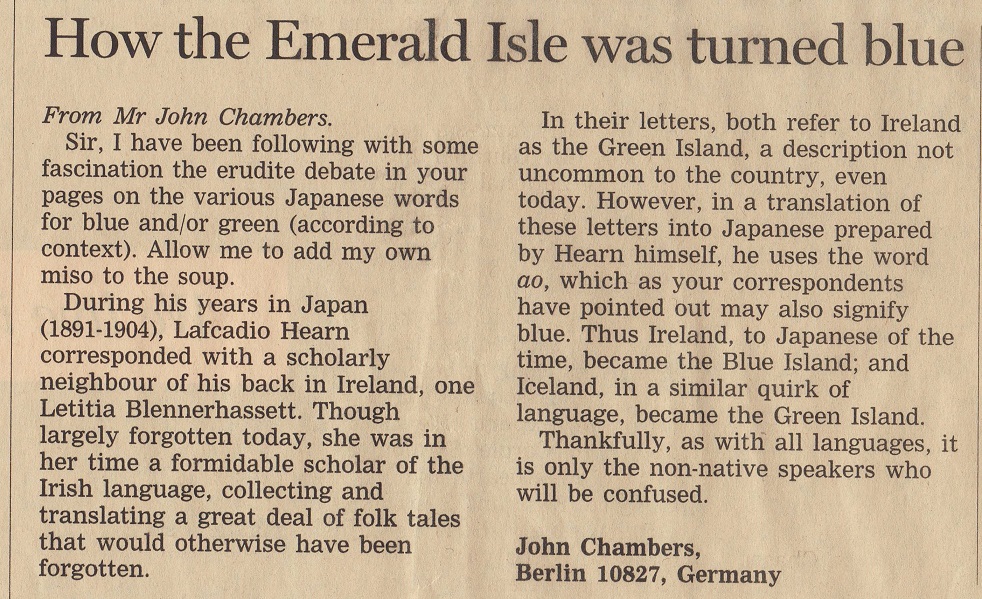|
Letitia Blennerhassett in popular culture |
Proof of our descent from Blennerhassett
DNA testing - Blennerhassett problem
|
See Proof of our descent from Blennerhassett. I call it as proved that our ancestor George Cashel (born 1807) descends somehow from Robert Blennerhassett (died 1765) and his wife Frances Yielding. Nothing else explains the DNA plus other evidence.
Most likely George Cashel is the natural son of one of six Blennerhassett men.
I am trying to prove a story from 1807.


George Cashel's RIC record.
Showing that he was recommended by "A. Blennerhasset, J.P."
when he joined the County Constabulary in 1828.

George Cashel is written
"George Blennerhassett Cashel"
on the marriage cert of his son
Blennerhassett Cashel in 1869.
See full size.
Detail from grave of George Cashel's son
Blennerhassett Cashel.
![]()
The parents of George Cashel are not that far back.
They are
Ahnentafel number
88 and 89
(if I am number 1).
There are 64 people in that generation, numbered 64 to 127.


This brief note
in the BLENNERHASSETT entry in
[Burkes Irish, 1976]
by Brian Fitzelle
first made me realise in 1985
that my Blennerhassett line might connect to the World family tree.

U2 at
Live Aid
in 1985 -
the summer when my lifelong quest for Blennerhassett began.

Me at
New Ballyseedy
in 1985, at the start of the life-long hunt for Blennerhassett.
It later turned out that my ancestors never lived in this building.

Me at the rear
of
Blennerville House
in 2022.
This is probably my actual ancestral home.


John writes a joke letter to the Financial Times in 2008.
"How the Emerald Isle was turned blue"
(and here),
Financial Times, 22/23 Mar 2008.
"During his years in Japan (1891-1904), Lafcadio Hearn
corresponded with a scholarly neighbour of his back in Ireland, one Letitia Blennerhassett.
Though largely forgotten today, she was in her time a formidable scholar of the Irish language,
collecting and translating a great deal of folk tales that would otherwise have been forgotten."
This letter was published, but the data is entirely made up.
However, I have come round to suspect that
I have been looking at his baptism all along, but could not recognise it.
That he is George Cashell,
baptised in 1808 in Tralee RC church,
the adopted son of the
Stephen Cashel family of Tralee.
His baptism was always there, but it could not tell me who he was.


What we suspect is George Cashel's baptism
on my website in
Jan 2004.
It seems
I had already discovered it by 2004,
but I could not see it.
It did not make sense.
But if George is the adopted son of the Stephen Cashel family of Tralee, then even if the census had survived, it could not tell me who he was.

DNA was the new thing that moved the problem forward, disproving the Letitia theory, and proving the Baronets theory. And its work is not yet done. Hopefully it can lead me to the mother's identity.

Please donate to support this site.
I have spent a great deal of time and money on this research.
Research involves travel and many expenses.
Some research "things to do"
are not done for years, because I do not have the money to do them.
Please Donate Here
to support the ongoing research and
to keep this website free.